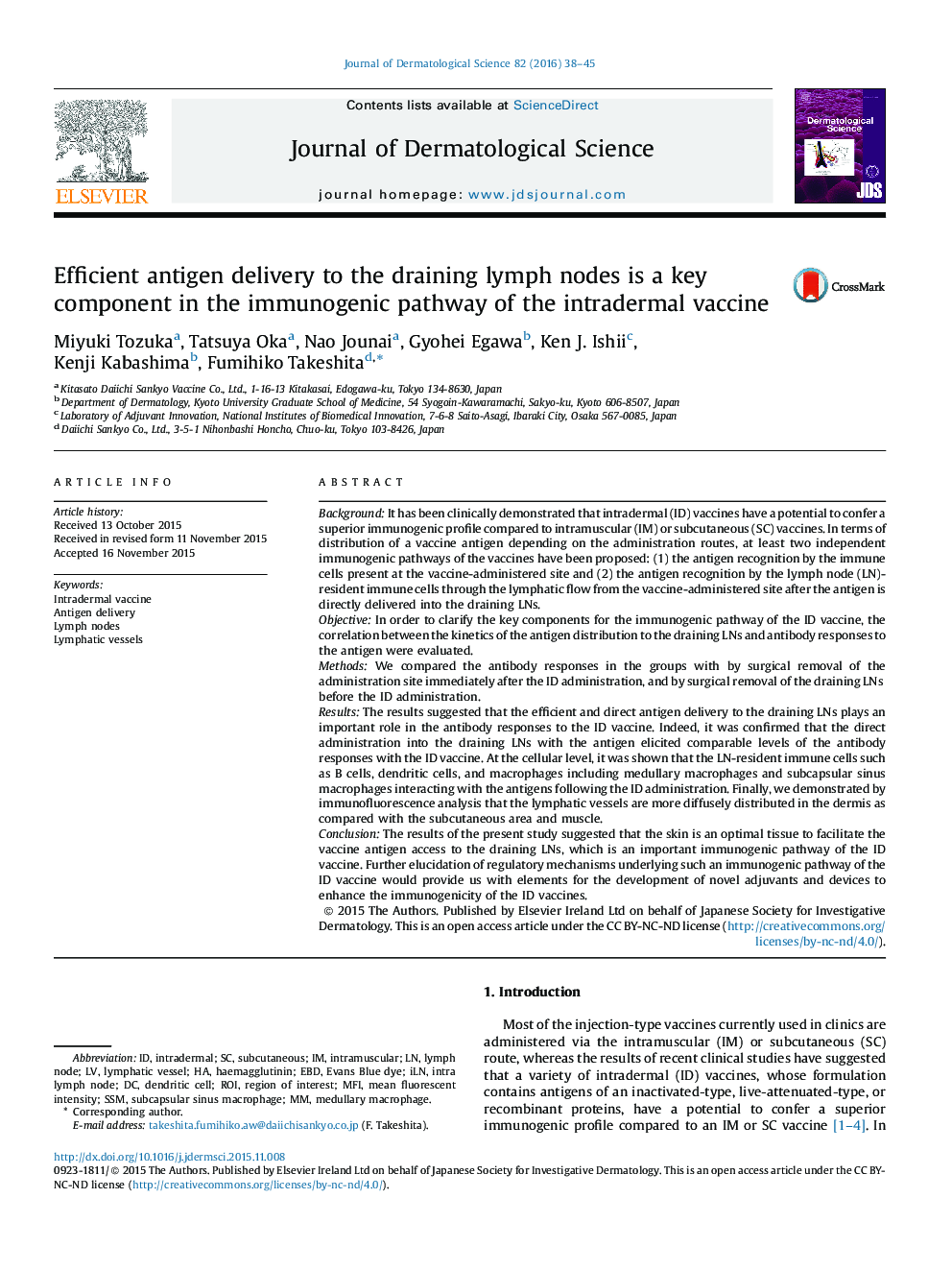| کد مقاله | کد نشریه | سال انتشار | مقاله انگلیسی | نسخه تمام متن |
|---|---|---|---|---|
| 6074128 | 1203179 | 2016 | 8 صفحه PDF | دانلود رایگان |
- Antigen delivery to draining LNs is a key immunogenic pathway of the ID vaccine.
- The draining LNs-resident cells contribute primarily to the immunogenicity.
- LVs are more diffusely distributed in the dermis than the SC area and muscle.
BackgroundIt has been clinically demonstrated that intradermal (ID) vaccines have a potential to confer a superior immunogenic profile compared to intramuscular (IM) or subcutaneous (SC) vaccines. In terms of distribution of a vaccine antigen depending on the administration routes, at least two independent immunogenic pathways of the vaccines have been proposed: (1) the antigen recognition by the immune cells present at the vaccine-administered site and (2) the antigen recognition by the lymph node (LN)-resident immune cells through the lymphatic flow from the vaccine-administered site after the antigen is directly delivered into the draining LNs.ObjectiveIn order to clarify the key components for the immunogenic pathway of the ID vaccine, the correlation between the kinetics of the antigen distribution to the draining LNs and antibody responses to the antigen were evaluated.MethodsWe compared the antibody responses in the groups with by surgical removal of the administration site immediately after the ID administration, and by surgical removal of the draining LNs before the ID administration.ResultsThe results suggested that the efficient and direct antigen delivery to the draining LNs plays an important role in the antibody responses to the ID vaccine. Indeed, it was confirmed that the direct administration into the draining LNs with the antigen elicited comparable levels of the antibody responses with the ID vaccine. At the cellular level, it was shown that the LN-resident immune cells such as B cells, dendritic cells, and macrophages including medullary macrophages and subcapsular sinus macrophages interacting with the antigens following the ID administration. Finally, we demonstrated by immunofluorescence analysis that the lymphatic vessels are more diffusely distributed in the dermis as compared with the subcutaneous area and muscle.ConclusionThe results of the present study suggested that the skin is an optimal tissue to facilitate the vaccine antigen access to the draining LNs, which is an important immunogenic pathway of the ID vaccine. Further elucidation of regulatory mechanisms underlying such an immunogenic pathway of the ID vaccine would provide us with elements for the development of novel adjuvants and devices to enhance the immunogenicity of the ID vaccines.
Journal: Journal of Dermatological Science - Volume 82, Issue 1, April 2016, Pages 38-45
